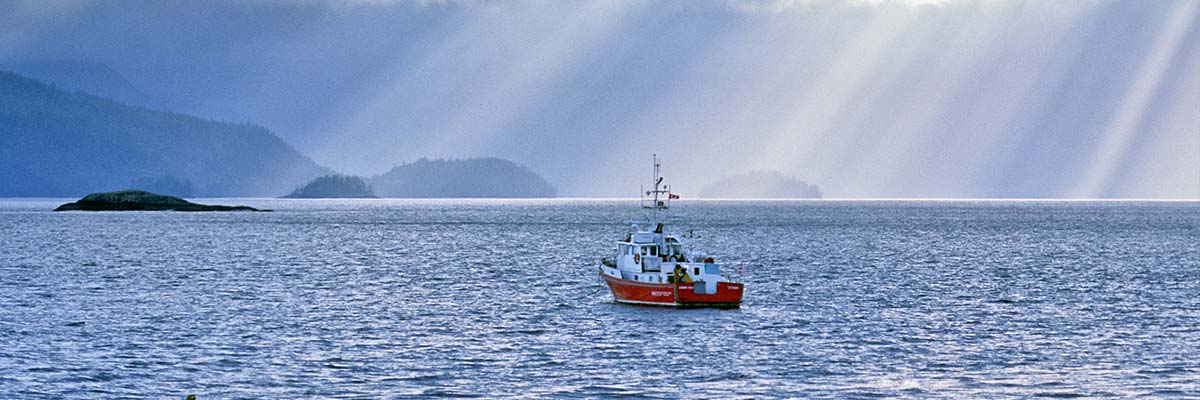

In February 2023, Parks Canada launched a new policy to guide the establishment and management of National Marine Conservation Areas (NMCAs). The policy describes eight interconnected management goals for the NMCA program and sets the direction for all current and future NMCAs. These goals reflect the Government of Canada commitments to building renewed relationships with Indigenous peoples and protecting biodiversity and the reciprocal relationships between people and nature. This new policy is timely, as Canada is committed to protecting 30 per cent of land and waters by 2030, that is, Target 3 of the Kunming-Montreal Global Biodiversity Framework. The policy will strengthen Canada’s contribution to the qualitative elements of this target, setting out how NMCAs can be effectively and equitably managed.

The new policy and directive are founded on the following eight interconnected, mutually reinforcing management goals that set direction for NMCA success. Protecting marine ecosystems and biodiversity is of primary importance.
Goal 1: Protect marine ecosystems and biodiversity to maintain or improve ecological sustainability
Goal 2: Conserve cultural heritage
Goal 3: Manage use in an ecologically sustainable manner
Goal 4: Support Indigenous leadership in marine conservation
Goal 5: Contribute to the well-being of Indigenous peoples and coastal communities
Goal 6: Facilitate opportunities for meaningful visitor experience
Goal 7: Enhance awareness and understanding of NMCAs
Goal 8: Advance effective collaboration for management
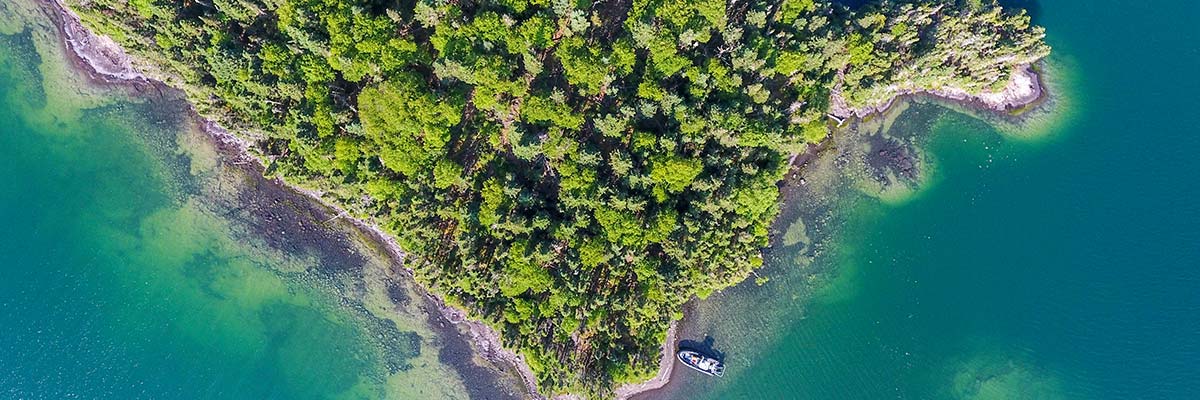
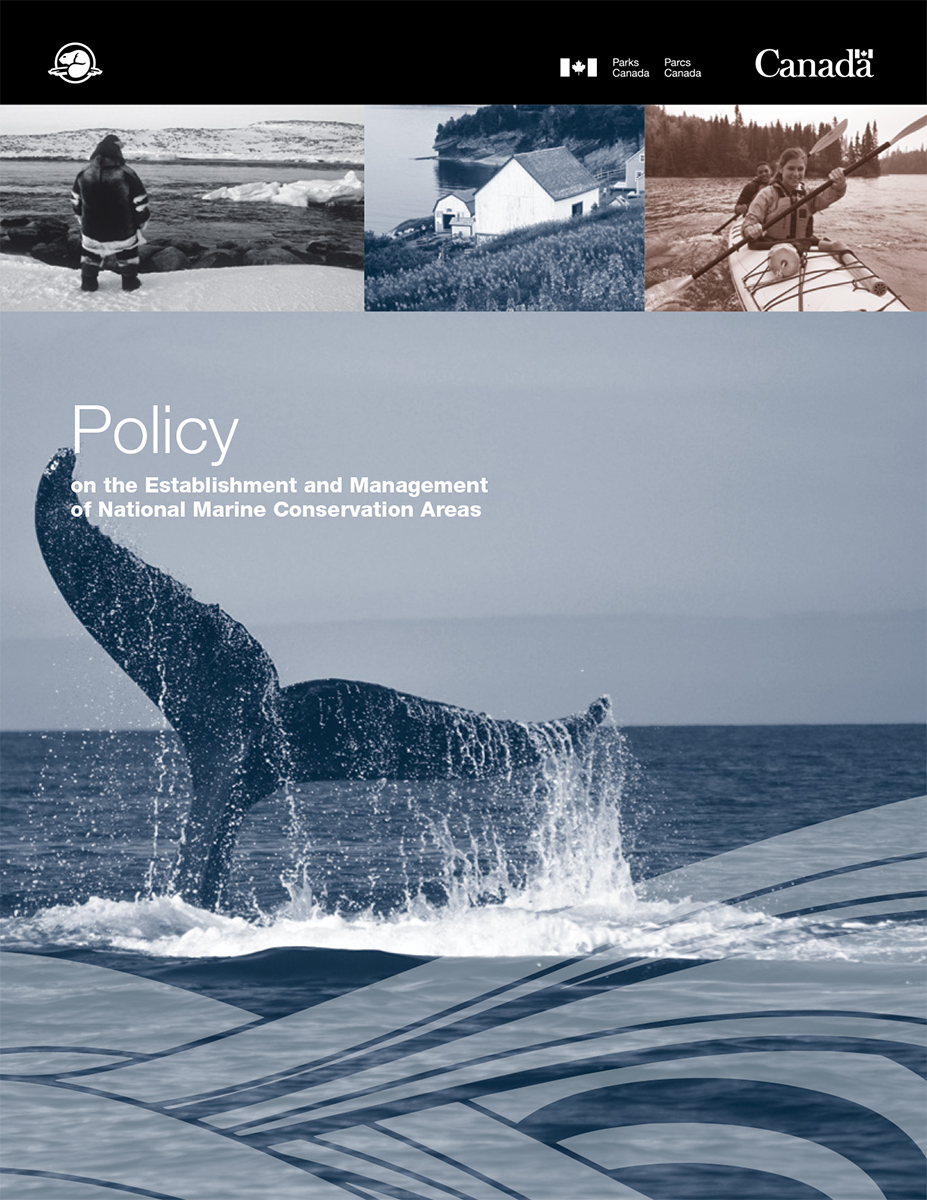
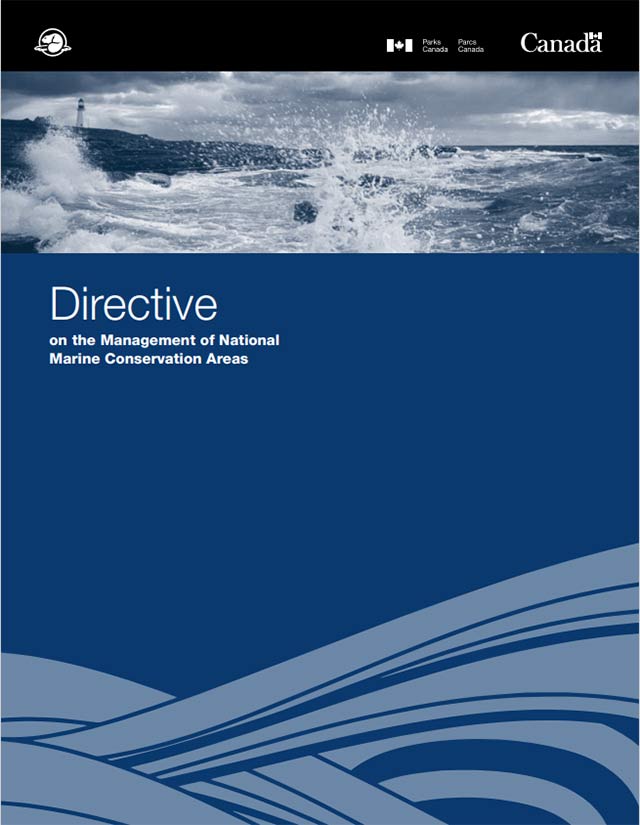
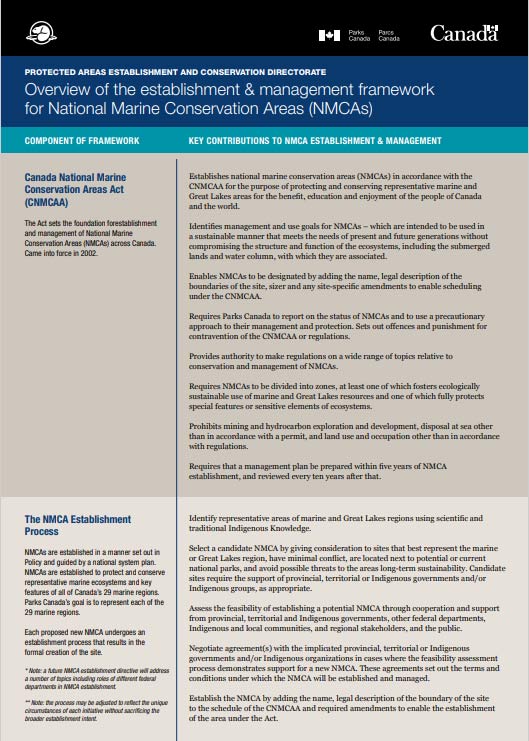
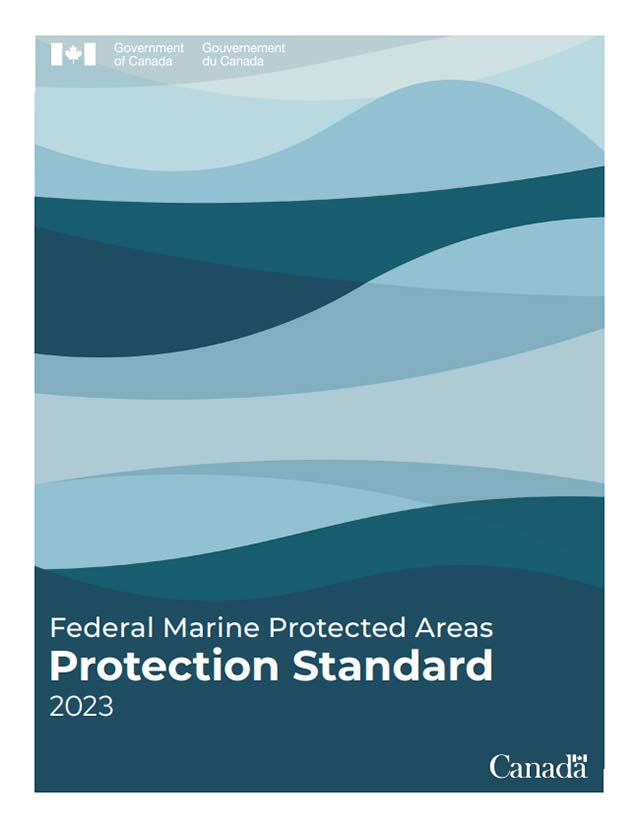
Parks Canada is developing general regulations under the Canada National Marine Conservation Areas Act (the Act) to support the management of NMCAs. General regulations are nationally consistent and enforceable tools that will apply to all NMCAs established under the Act from coast to coast to coast and including the Great Lakes.
Activities and uses that occur in NMCAs require active management to ensure that ecosystems and cultural, historical, and archaeological resources are protected for future generations. Regulations will help ensure that activities and uses occurring within NMCAs are conducted in a manner that is ecologically sustainable. They will also help Parks Canada carry out the decisions of management boards for these areas and will provide clarity and transparency to partners and stakeholders exploring the feasibility of establishing NMCAs.
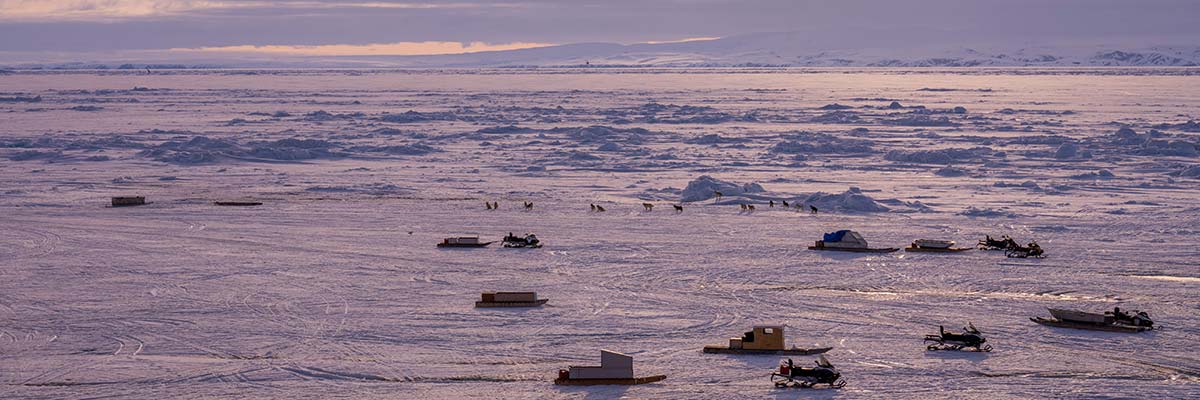
The proposed regulations would cover the following themes:
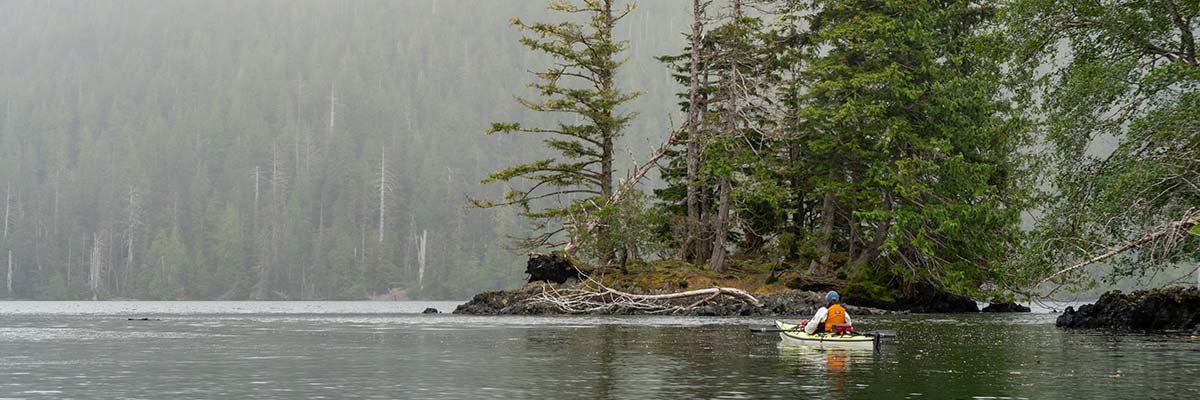
The process of developing regulations involves meaningful and sustained engagement with Indigenous peoples, partners, stakeholders and the public.
Between early April and October 2023, Parks Canada invited comments on a proposal to develop new regulations for NMCAs. The proposal was described in a series of five summary papers. You can continue to stay informed about the process to develop regulations by visiting Let’s Talk NMCAs.